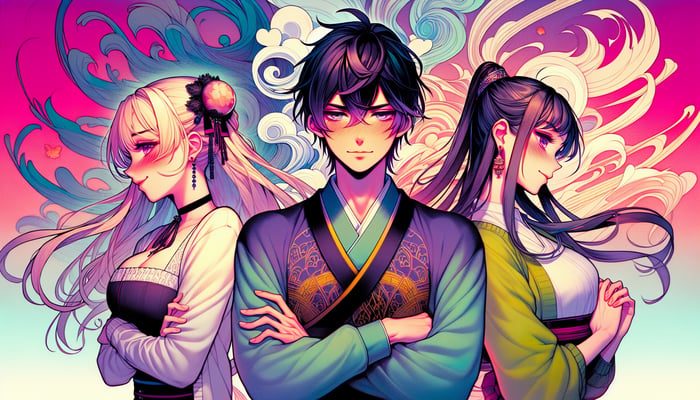The Psychology Behind Tsundere and Other Anime Tropes
Anime is a world brimmed with colorful characters and intriguing tropes that capture our hearts and minds. Whether you're a long-time otaku or new to the fun-filled universe, there's always something captivating about the diverse personalities anime showcases. But have you ever wondered why these characters behave the way they do? Let's dive into the fascinating psychology behind popular anime tropes like tsundere, kuudere, yandere, and more!
Understanding the Tsundere
The term "tsundere", derived from tsun-tsun (meaning to turn away or be aloof) and dere-dere (meaning to become lovey-dovey), describes a character typically characterized by a cold, hostile exterior but a warm and loving heart beneath. It's a beloved trope that has intrigued fans for years, and its origins can be traced back to classic literature and early manga.
Why Tsundere Exists: The appeal of tsundere characters often lies in the mystery and emotional journey of watching someone icy gradually melt away. Psychologically, this trope resonates because it mirrors real-life behaviors where people hide their true feelings due to fear of vulnerability. Witnessing a tsundere's transformation is like peeling back emotional layers, a relatable process for anyone who has struggled with opening up to love and trust.
Exploring Other Anime Tropes
While tsundere might steal much of the spotlight, there are other fascinating tropes to explore, each tapping into universal human emotions and experiences.
- Kuudere: Characters who appear calm, composed, and unemotional, yet have an emotionally-rich inner world. Think of them as the cool and collected types who slowly reveal their depth. This trope appeals due to its tranquility and the charm of uncovering hidden sentiments.
- Yandere: In stark contrast, yandere characters start off sweet and loving but can become murdererously obsessive. They reflect our intrigue with love's darker side, alluding to the potential chaos of unchecked passion and attachment.
- Dandere: Typically shy and reserved, dandere characters take longer to come out of their shell. This reflects a common social anxiety that many feel in real life, showcasing vulnerability and the courage needed to break free from it.
How Anime Tropes Inspire Creative Design
The psychology of anime tropes not only makes characters more relatable but also inspires creativity in designing custom anime merchandise. Imagine having your own tsundere-inspired mug or a cute yandere phone case that reflects the complex emotions you love about your favorite anime characters!
Creating products that capture these iconic traits means blending unique aesthetics with the essence of what makes these characters tick—a perfect marriage of art and personality.
Wrap-up
Anime tropes like tsundere, kuudere, yandere, and dandere aren't just entertaining; they're deeply rooted in human psychology. They reflect our own experiences, emotions, and the multifaceted nature of relationships.
If you're brimming with inspiration, why not channel it into personalized anime-style products that celebrate these tropes? Whether for yourself or as creative gift ideas for fellow anime enthusiasts, these custom items are a fantastic way to express and share your anime-loving personality.
Do you have a favorite trope or character? Share your thoughts in the comments below!
